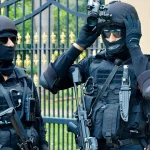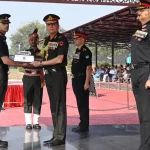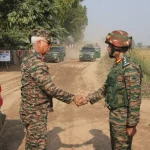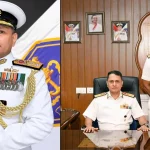The role of the Chief of Army Staff (CoAS) in India is not only pivotal within military operations but also holds considerable significance in national security and strategy. As the highest-ranking officer in the Indian Army, the CoAS plays a critical role in conveying military priorities to the government and ensuring operational readiness. Understanding the compensation structure, particularly the salary of the Indian Army Chief, sheds light on the nation’s commitment to its armed forces and the importance placed on such leadership.
Historical Context
The Indian Army has a rich legacy, rooted in a history of both valor and strategic importance. Established in the 19th century during British rule, what is now the Indian Army has evolved significantly, especially post-independence in 1947. The progressive enhancement of the pay scales, allowances, and benefits afforded to senior officers including the CoAS reflects not only the growing responsibilities they shoulder but also the recognition of their contribution to the nation’s security.
As the geopolitical landscape has changed, so too have the roles and responsibilities of the military, necessitating a comprehensive reevaluation of compensation structures. The 7th Pay Commission, implemented in 2016, marked a significant turning point in this regard. It established a new pay level system aiming to ensure that the remuneration of military personnel is commensurate with their services and sacrifices.
The Salary Structure of the Indian Army Chief
The salary of the Chief of Army Staff in 2025 stands at a fixed basic pay of ₹2,50,000 per month. This figure is indicative of the Pay Level 18, which is the highest pay scale under the 7th Pay Commission. It is essential to note that this salary is significantly higher than that of other generals in the Indian Army, thereby reflecting the apex position the CoAS holds.
Comparative Salary Structure for Senior Officers:
- Lieutenant General: ₹1,82,200 – ₹2,24,100
- Major General: ₹1,44,200 – ₹2,18,200
- Brigadier: ₹1,39,600 – ₹2,17,600
These figures not only illustrate the hierarchy within the army but also ensure that those who ascend to the highest ranks are appropriately compensated for their strategic and operational leadership.
Additional Allowances and Benefits
While the basic salary provides an essential indication of the CoAS’s remuneration, it is crucial to consider the various allowances and perks that accompany this position:
- Housing Allowance: Senior officers, including the CoAS, typically receive substantial housing allowances or government-provided accommodations that complement their salaries. The facilities often include official bungalows in prime locations, enhancing the quality of living.
- Transport Allowance: Given the nature of the job, transport allowances are provided to facilitate the mobility of the CoAS, which is vital for operational readiness and engagement with both domestic and international stakeholders.
- Healthcare Benefits: Comprehensive healthcare benefits form a crucial component of the package. Senior military officers and their families are entitled to superior medical facilities, which ensures that their health concerns are addressed without undue financial stress.
- Pension and Retirement Benefits: The completion of service as CoAS brings about significant retirement benefits, which include a sizable pension, ensuring financial stability in their post-service life.
Comparative International Perspectives
When considering international standards, the salary of the Indian Army Chief is noteworthy. In terms of purchasing power parity (PPP), the annual compensation for the Indian Army Chief aligns closely with American standards for top generals. According to research from 2016, this equivalence suggests that even though the nominal figures may differ, when adjusted for cost of living and earnings in respective economies, the two positions reflect a similar recognition of responsibility, presence, and expertise.
Statistical Data and Research Insights
The data concerning the salary structures and allowances of military personnel reveals significant trends over the years:
- Increasing Salaries: Historical data shows a consistent upward trajectory in salaries over the decades, reflecting inflation and enhanced responsibilities. This trend has been echoed through various Pay Commissions, particularly the 7th, which marked substantial increases aimed at retaining and attracting talent.
- Comparison with Civil Services: The salaries of military officers, especially at the top levels, continue to remain competitive with civil services, particularly given the parallel rank structure in the Indian Armed Forces and administrative services.
- Employment Satisfaction Surveys: Research indicates that remuneration is a critical factor in job satisfaction among military personnel, with many citing fair pay as essential for morale and operational effectiveness.
Challenges and Solutions
Despite the apparent benefits, challenges persist in this domain.
Challenges:
- Disparities Across Services: While the CoAS’s pay aligns with that of the Chiefs of the Navy and Air Force, there have often been disparities between different ranks within the army. Adjustments to ensure competitive parity across ranks are continually needed.
- Retention of Talent: As the private sector continues to lure skilled individuals, maintaining competitive salaries and benefits is paramount to retain experienced military personnel.
Proposed Solutions:
- Regular Pay Reviews: Instituting regular reviews and adjustments in salary structures and allowances can mitigate disparities with civilian roles, ensuring the military remains an attractive career option.
- Enhanced Benefits Packages: Beyond salary, expanding health, education, and support services can create more compelling packages to attract and retain talent in the armed forces.
Future Trends and Predictions
As geopolitical tensions continue to evolve, national security needs will undoubtedly elevate the importance of military leadership and the roles of the CoAS and other senior military officials.
Trends to Watch:
- Digital Transformation: The army is increasingly leaning into technology and digital transformation, which may necessitate redefinitions of roles and some knowledge-based positions.
- Increased Defense Budgets: With a growing focus on enhancing military capabilities, an increase in defense spending may result in higher salaries and improved benefits for those serving.
- Global Comparisons: The rising stature of India in global politics may impel regular reviews of military compensation to align with international benchmarks, especially in light of expanding strategic alliances.
Conclusion
The Chief of Army Staff in India earns a fixed monthly salary of ₹2,50,000, underscoring the critical importance of this role within the broader context of national security and military readiness. When supplemented with allowances and comprehensive retirement benefits, the overall compensation package reflects the value assigned to leading the country’s armed forces. The evolution of this salary structure speaks to the government’s commitment to ensuring that the military leadership is both competitive and capable of fulfilling its challenging responsibilities.
Understanding these facets not only highlights the respect and recognition afforded to military leaders but draws attention to the essential engagement required from civilian governance for a robust national defence strategy. As debates surrounding military funding and workforce retention intensify, it becomes ever more critical to address these questions with foresight and strategic planning. For aspiring military leaders and policy stakeholders alike, remaining informed about such trends will be vital in shaping the future of India’s armed forces.
For those interested in contributing to this esteemed institution, exploring resources like those at SSBCrack and SSBCrackExams can be an excellent start, where they provide valuable study materials, courses, and eBooks designed for aspiring candidates. Engage in this journey to not only understand but also be a part of the honourable service to the nation.












